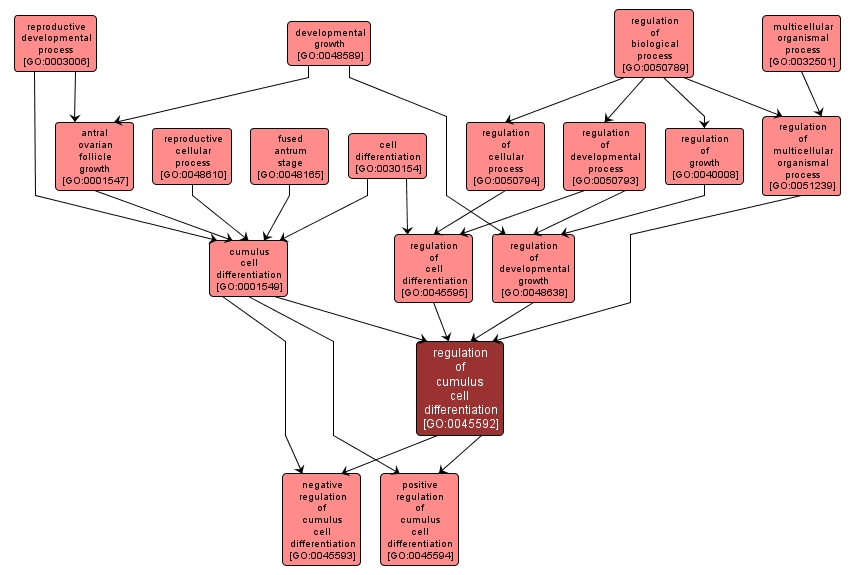GO TERM SUMMARY
|
| Name: |
regulation of cumulus cell differentiation |
| Acc: |
GO:0045592 |
| Aspect: |
Biological Process |
| Desc: |
Any process that modulates the frequency, rate or extent of ovarian cumulus cell differentiation. |
Synonyms:
- regulation of ovarian cumulus cell differentiation
|
|

|
INTERACTIVE GO GRAPH
|














